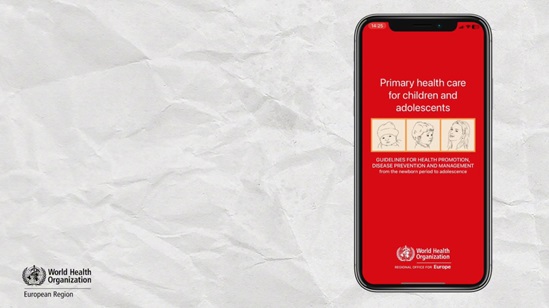Improving primary health care for children and adolescents
WHO works closely with countries to ensure that children and adolescents, no matter where they live, receive the health services they need according to the same standards based on evidence and the best interest of the child.
Primary health care is the foundation of universal health coverage and ensures quality comprehensive health care for all, including children and adolescents. The UN Convention of the Rights of the Child (UNCRC) states that all children have the right to enjoy the highest attainable standard of health and access to health-care services. “Primary care is the most inclusive, effective and efficient approach to enhance both physical and mental well-being. This holds true for all population groups, especially children and adolescents,” said Dr Hans Henri P. Kluge, WHO Regional Director for Europe.
Although primary care is the cornerstone of care in communities across the WHO European Region, the reality is that the primary care services available to children and adolescents are not always optimal. All too often, providers lack the knowledge and resources to provide care that is evidence-based and in the best interests of the child or adolescent.
WHO, through its Office for Quality of Care and Patient Safety in Athens, Greece, supports countries to provide access to quality health services without harm to all children and adolescents in the Region, to align with the UNCRC, through the implementation, promotion and raising awareness of evidence-based guidelines on primary health care.
Pocket book to support health professionals when caring for children and adolescents
WHO has developed the “Pocket book of primary health care for children and adolescents”, a comprehensive manual for doctors, nurses and other health workers responsible for caring for children and adolescents in primary care settings. The Pocket book responds to countries’ calls for a redesign of child and adolescent primary care services. It provides guidance on how to manage and when to refer children and adolescents presenting with common complaints and conditions. It also includes information to enable primary care providers to care for children and adolescents with long-term conditions and diseases managed by specialists. Its focus on evidence-based practices and prevention aim to ensure that children and adolescents receive the care they need while avoiding unnecessary treatments and hospitalization.
WHO app for primary health care for children and adolescents: accessible and easy to use
WHO introduced the app for primary health care for children and adolescents. The app is based on the content of the Pocket book and includes tools for improving the diagnosis and management of common diseases during childhood and adolescence, limiting medication errors, and reducing the unnecessary use of antibiotics. Intuitive, user-friendly and accessible, it can be downloaded for free and be used offline in any compatible device.
Working with countries to improve primary health care: implementing and tailoring the Pocket book and its app
WHO is partnering with various organizations to ensure that the standards outlined in the Pocket book and its derived app are implemented across countries in the Region and incorporated into national health-care financing schemes. The aim is for the Pocket book to facilitate improvements in health systems, enabling them to deliver quality health services to all children and adolescents. Applying the guidance of the Pocket book will, however, require strong leadership, adequate resources and political commitment from all countries.
To make the WHO Pocket book widely accessible to health professionals, it is being translated and is available in multiple languages across the Region, such as Russian and Ukrainian. Initially developed for the Region, the Pocket book provides general recommendations, which can be adapted to respond to national contexts. This is why WHO, in collaboration with the United Nations Children’s Fund (UNICEF), is working with Member States and their national technical working groups to tailor the Pocket book to the specific needs and contexts of individual countries within and beyond the Region.






